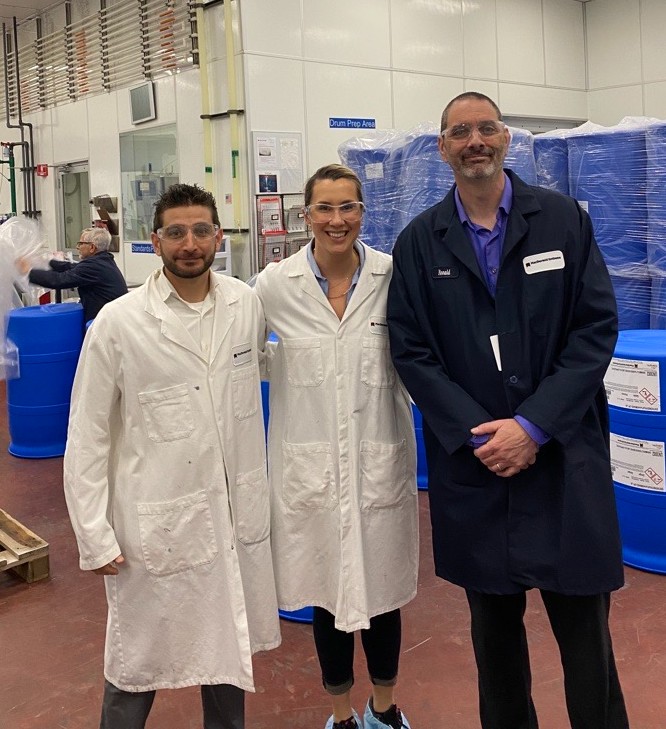Occupational health & safety is foundational to the success of our business. We nurture a safety-first culture and emphasize health & safety in our everyday operations and across our organization, from the most senior level of the company to the facility floor. To promote worker health & safety around the world, we monitor legal and regulatory requirements locally and use comprehensive management tools, including policies, training requirements, best practices and processes, and product quality and safety measures. Strong safety standards and programs help us maintain our reputation as an industry leader and responsible employer while reducing our legal and financial exposure.
In 2022, we announced a Sustainability Goal in support of this approach: achieve continuous annual reductions in our Total Recordable Incident Rate (TRIR) as we strive toward achieving zero significant safety incidents.
Managing Health & Safety
Our Global Environmental, Health & Safety Policy, which is translated into multiple languages and available on our intranet, demonstrates our commitment to manufacturing products and providing services in a safe work environment.
To promote and maintain a healthy and safe workplace, all of our sites maintain health & safety management systems, of which 34% are certified to the ISO 45001 standard. When not using ISO 45001 (formerly OHSAS 18001) accreditations, our sites employ different safety programs, which include risk assessments. In addition, our software platforms enable our sites to report key health & safety information (such as incident reporting and job hazard analyses) which is regularly reviewed and discussed with management. We are also in the process of implementing new EH&S software which we plan to leverage to improve incident management, training, compliance, communication, collaboration and engagement.
Our global EH&S Council is comprised of cross-functional leaders from Supply Chain, Operations, Legal and EH&S functions. The Council is responsible for setting the company-wide EH&S strategy and fostering a safe and healthy work environment.
Ensuring Effective Health & Safety Management
Identifying and controlling health & safety hazards in our workplace and day-to-day processes are fundamental to the prevention of injuries and illnesses. Our software systems capture risks, incidents and responses, and guide our health & safety teams in performing the following procedures:
- Site risk assessments on existing operations
- Job Hazard Analysis (JHA) prior to the commencement of any positions
- Engineering controls, administrative controls and personal protective equipment (PPE)
- Employee training to mitigate potential hazards
- Regular industrial hygiene and medical check-ups for employees who handle hazardous chemicals
- Emergency response mock drills
- Health & safety training and potential hazard identification exercises
- Root cause analysis following incidents and safety observations using various tools (Fishbone Diagram, 5 Why, Fault Tree) and reviews of response effectiveness to prevent recurrence
- Implementation of safety ideas submitted through the Idea Chest or shared with our site-level Safety Committees

EH&S and Sustainability colleagues at our West Haven, CT
manufacturing facility
Measuring Health & Safety Performance
Safety performance at our facilities is supported by the strong leadership of our site managers, our safety-first culture and our continuous improvement mindset. Our sites understand the importance of safety, tracking leading indicators and using safety management tools as well as root cause analysis in the event of an incident.
In 2023, we made improvements across several key EH&S KPIs including TRIR and LTIR, which decreased by 3% and 11%, respectively, as compared to 2022. Additionally, we experienced fewer Total Recordable Injuries/Illnesses, Lost Time Injuries/Illnesses and Total Days Away from Work Injuries/Illnesses. These improvements underscore our focus on continuous improvement and demonstrate the effectiveness of our safety campaigns and our employees’ increased awareness. We focus on improving our practices, including initiatives for the alignment of our latest acquisitions with our health & safety programs.
